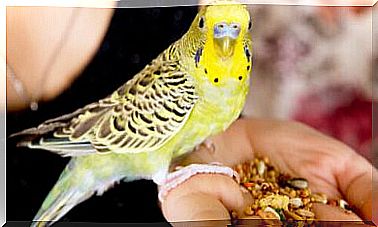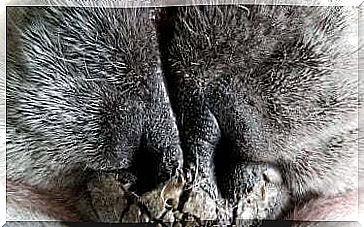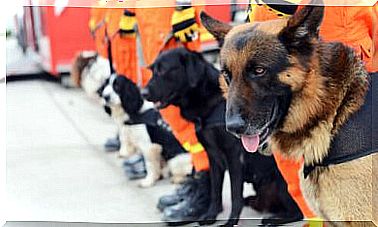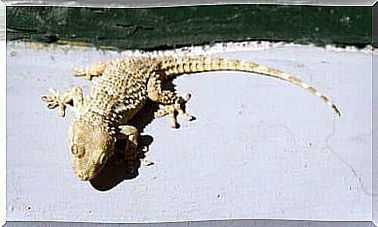Snow Leopard: Characteristics, Behavior And Habitat

The snow leopard ( Panthera uncia) , also known as irbis or bars , is one of the most important predators of the mountain ranges of Central Asia. Feared and admired by Tibetan cultures and mountain shepherds, this emblematic carnivore can live up to 6,000 meters above sea level.
Precisely the inhospitable and hidden habitat , together with its shyness and its fur, make this feline one of the most fascinating and least known animals on our planet.
Characteristics of the snow leopard
Although smaller than other large predators, it can reach 75 kg in weight. However, this is a maximum value: on average, the snow leopard weighs between 30 and 60 kilos. It has a stouter and shorter body than that of other felines, although it has one of the longest tails of all carnivorous species.
The coat is thick and with different shades of gray, with black dots in the shape of a rose, white chest and shades ranging from yellowish to brown, in some parts of the body. His eyes are pale green or gray. An almost unique feature, compared to all the other big wild cats .
Over the centuries, the snow leopard has learned to adapt to low temperatures, a process that has produced strategic changes at the morphological level. Its body is very compact and covered with a thick layer of hair. In addition, it has relatively small, hairy ears and wide claws that function like snowshoes. Curiously, the feet are similar in shape to those of the polar bear.
Its tail is one of its most unique features. It is actually a very hairy deposit of fat that the animal uses as a kind of scarf during the night. The length of its tail is such as to allow it a greater balance when it has to climb mountains or run on very steep slopes.
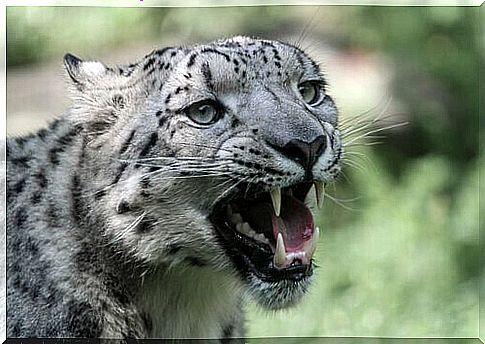
The snow leopard has a very long nasal cavity, which allows it to heat the cold Himalayan air. One of its curiosities is that it cannot roar, because although its hyoid is similar to that of the so-called big cats, it has no other morphological adaptations that allow it to equally exploit the larynx.
Behavior of the snow leopard
Like other felines, they are solitary animals that meet only for breeding. After giving birth, the mother will take care of the offspring until the first 20 months of life. Normally, each specimen has its own territory, which can be as large as 200 square km, depending on the availability of food. Mark the territory by urinating or rubbing against the rock, a way to communicate and make the paths familiar. They are crepuscular felines, that is, they are active during sunset and sunrise.
As for their hunting habits, they can eat carrion, but they are good hunters and prefer ibex, hares, marmots, wild goats, deer, wild boars and other ruminants. They are often forced to fight against other predators and almost always have the better of jackals, foxes and even lynxes.
Sometimes, the snow leopard attacks the cattle of shepherds in Nepal and elsewhere. There is a conflict similar to the one that occurs in Europe with wolves, which has been remedied by organizations and governments, to prevent the extinction of this species.
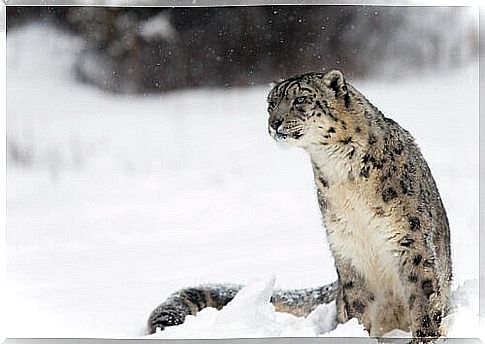
The habitat of the snow leopard
The snow leopard is found in the mountainous areas of Siberia, Russia, Pakistan, Mongolia, Tibet, India, Nepal or Uzbekistan. In these areas it lives at great altitudes, from two to six thousand meters, on the slopes of mountains and snow-capped peaks.
Although its distribution is relatively wide, recently the last 4,000-9,000 snow leopards are increasingly threatened by poaching and climate change. Even for this species, the worst of the threats is represented by man.
Fortunately, however, the mountain populations of Asia do not accept the disappearance of a living being that is, moreover, a symbol of tradition. The snow leopard is part of the culture of these people and a process is underway for the protection and conservation of the Panthera uncia .
In addition to the disappearance of such a fascinating and emblematic animal, there is also a real risk for the ecosystem of the Asian mountains. In fact, the snow leopard helps to keep the number of other small predators constant which, otherwise, would grow exponentially. Threatening the survival of herbivores such as goral, bharal, Himalayan tahr, markhor and argali.
